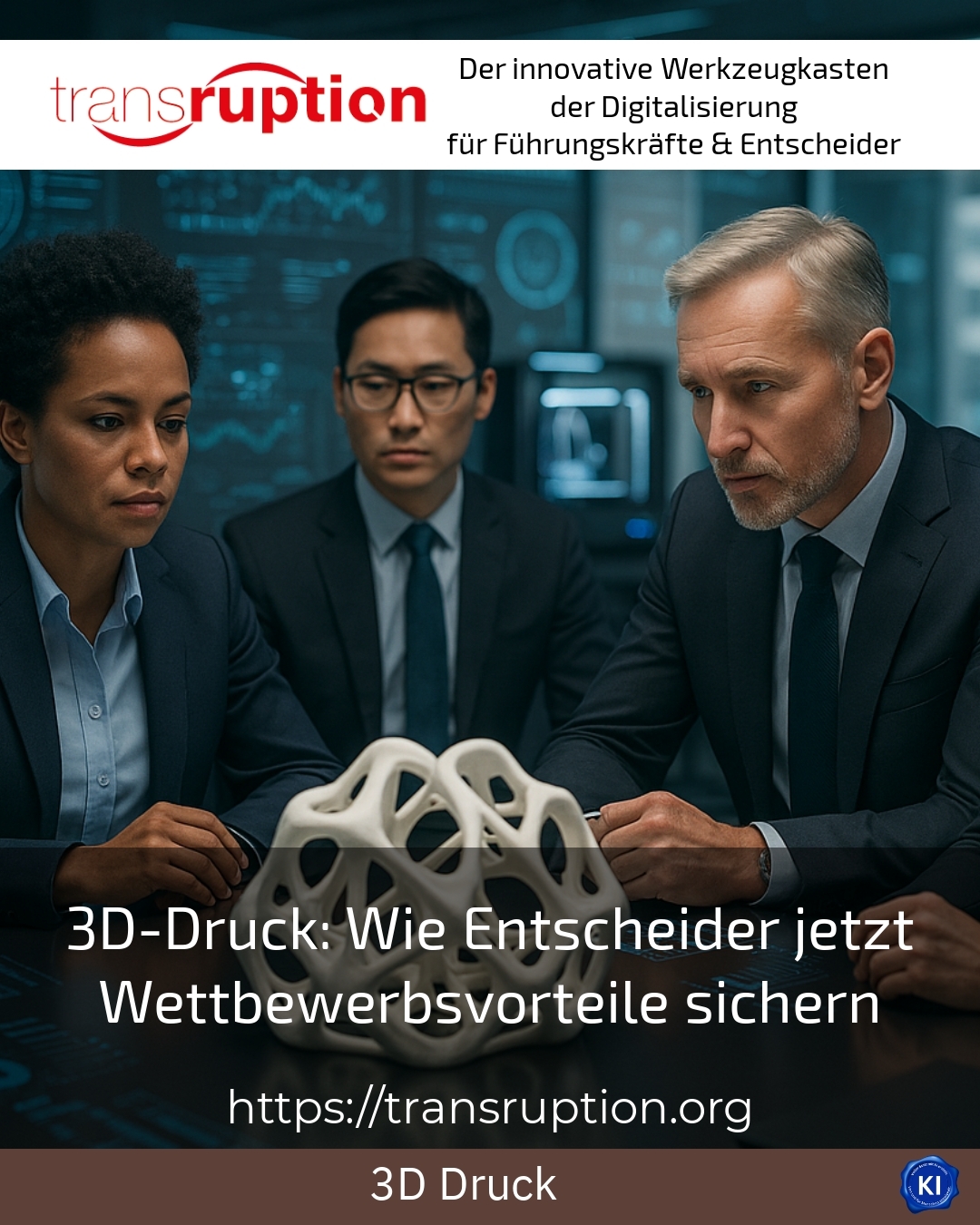Today, 3D printing opens up a wide range of opportunities for decision-makers to position themselves effectively on the market and secure competitive advantages. This technology has evolved from a niche application to an integral part of modern manufacturing processes. Companies that use 3D printing strategically benefit from increased flexibility, faster development cycles and customised solutions that are precisely tailored to customer needs.
3D printing as the key to innovation and efficiency
In today's business world, customers increasingly expect customised products. 3D printing supports precisely this need by enabling the fast and cost-efficient production of customised components. Thanks to additive manufacturing, an automotive supplier, for example, can produce small special series without having to manufacture expensive new tools. This significantly reduces lead times and allows them to react flexibly to market changes. Mechanical engineering companies are also using 3D printing to produce complex components more easily and with less assembly effort.
BEST PRACTICE at the customer (name concealed due to NDA contract): A medium-sized company in the medical technology sector integrated 3D printing into prototype development. This enabled it to reduce the development time from six to just two weeks and bring new products to market faster.
Companies that use 3D printing in their daily operations often report that they are rethinking processes. Instead of manufacturing complex individual parts from solid material, they design assemblies as a single printed part. This not only reduces costs, but also optimises product functionality.
Flexible customisation and sustainable production
Other industries such as aerospace benefit in particular from the flexible customisability of additive manufacturing. Here, lightweight components are produced from special materials that reduce fuel consumption and offer maximum safety at the same time. Start-ups in the consumer goods industry also use 3D printing to manufacture their customised products quickly and in a resource-efficient manner, which strengthens sales and marketing.
BEST PRACTICE at the customer (name concealed due to NDA contract): A company from the high-tech electronics sector uses 3D printing to produce customised housings with complex cooling structures that would be almost impossible to manufacture conventionally. It increased its market share by combining innovation and sustainability.
What's more, 3D printing helps to reduce material waste and avoid longer supply chains through locally orientated production. This not only increases environmental friendliness, but also makes production less prone to disruption.
How decision-makers develop sustainable competitive strategies with 3D printing
Successful integration of 3D printing begins with a clear analysis of the company's processes. Decision-makers should check which product areas can benefit from additive manufacturing. Close collaboration with experts helps to realistically assess costs and potential savings. At the same time, it is important to make employees fit for the new technology through targeted training.
Practical examples show how companies are testing various application scenarios, from prototype construction to small series production. Particularly in toolmaking and special machine construction, companies are making their value creation more flexible and can react more quickly to customer requests thanks to 3D printing. In this way, a company in the metalworking industry secures decisive advantages by producing spare parts variably and locally instead of having to accept long waiting times.
BEST PRACTICE at the customer (name concealed due to NDA contract): A manufacturer of precision tools implemented 3D printing to produce spare parts at short notice. This reduced customer downtime and measurably improved customer satisfaction.
Technological trends and future opportunities
The development of innovative materials such as metal alloys or bio-based plastics is constantly expanding the possibilities of 3D printing. In addition, automation and artificial intelligence are ensuring faster printing processes and better quality control. These trends provide further impetus to integrate the technology into the company's own value chain.
Companies in the mechanical engineering and medical technology sectors are increasingly using high-speed 3D printing processes to produce prototypes faster and bring their products to market at the right time. This makes them more competitive and opens up new business models that are supported by digital networking.
My analysis
3D printing can represent a significant competitive advantage for companies if it is used strategically. Decision-makers who embrace the technology now will benefit from accelerated development cycles, customised product design and a potential reduction in costs. In particular, the flexibility and sustainability of the process make it attractive for a wide range of industries. It is important to start with a concrete plan and build up the right expertise in order to utilise the potential in the long term.
Further links from the text above:
3D printers for companies: Discover innovative business models
The main reason why companies are exploring 3D printing beyond prototyping
3D printing in the company: Advantages, integration and ...
Why companies should rely on 3D printing: A guide ...
Implementation strategies for additive manufacturing processes
For more information and if you have any questions, please contact Contact us or read more blog posts on the topic TRANSRUPTION here.
















